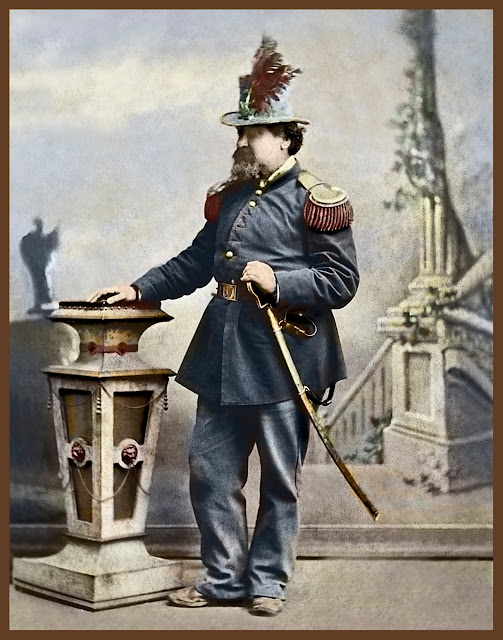The Golden Gate viewed from above Fort Point
toward the Marin Headlands c. 1890
Original photograph attribute to the studio of Taber - but, who knows who actually shot the image
Hand-tinted restoration by Bennett Hall
___________________________________________________________________________
Fort Point was constructed by the U.S. Army Corps of Engineers between 1853 and 1861
to prevent entrance of a hostile fleet into San Francisco Bay during the Civil War.
Between 1933 and 1937 the Fort was used as a base of operations for the
construction of the Golden Gate Bridge.
Castillo de San Joaquin was the original facility that later became Fort Point. As with Fort Point,
it was erected to guard the mouth of the Bay from intruders. On July 1, 1846, a critical event occurred with the timing of the raising of the Stars and Stripes in Monterey and later elsewhere over California, prior to statehood. More to follow on this nuance....
it was erected to guard the mouth of the Bay from intruders. On July 1, 1846, a critical event occurred with the timing of the raising of the Stars and Stripes in Monterey and later elsewhere over California, prior to statehood. More to follow on this nuance....
___________________________________________________________________________
From Wikipedia:
"The U.S. Army Corps of Engineers began work on Fort Point in 1853. Plans specified that the lowest tier of artillery be as close as possible to water level so cannonballs could ricochet across the water's surface to hit enemy ships at the water-line.[3] Workers blasted the 90-foot (27 m) cliff down to 15 feet (4.6 m) above sea level. The structure featured seven-foot-thick walls and multi-tiered casemated construction typical of Third System forts. It was sited to defend the maximum amount of harbor area. While there were more than 30 such forts on the East Coast, Fort Point was the only one on the West Coast. In 1854 Inspector General Joseph K. Mansfield declared "this point as the key to the whole Pacific Coast...and it should receive untiring exertions".
A crew of 200, many unemployed miners, labored for eight years on the fort. In 1861, with war looming, the army mounted the fort's first cannon. Colonel Albert Sidney Johnston, commander of the Department of the Pacific, prepared Bay Area defenses and ordered in the first troops to the fort. Kentucky-born Johnston then resigned his commission to join the Confederate Army; he was killed at the Battle of Shiloh in 1862."
Reference
Golden Gate and Fort Point after passing storm
___________________________________________________________________________
Hand-tinted black and white Photography, Bennett Hall, 1980
"This photograph of the bridge was made between passing storms with an 8x10" view camera. Waves from the heavy surf hit the sea wall causing these spectacular curtains of water, shooting up to 20' into the air. The motion effect is created using a slow shutter speed, about 1/4 second."
___________________________________________________________________________
hand-tinted@Bennett Hall • 2014
Original hand-tinted print: available
Original hand-tinted print: available
SOURCE: Collection of Bennett Hall / San Francisco Images; digitally mastered by Business Image Group.
Articles and stories in this post © Bennett Hall / San Francisco Images / Business Image Group • PURCHASE: You can acquire copies of these images framed and unframed through our World Wide Archive Web Galleries.



